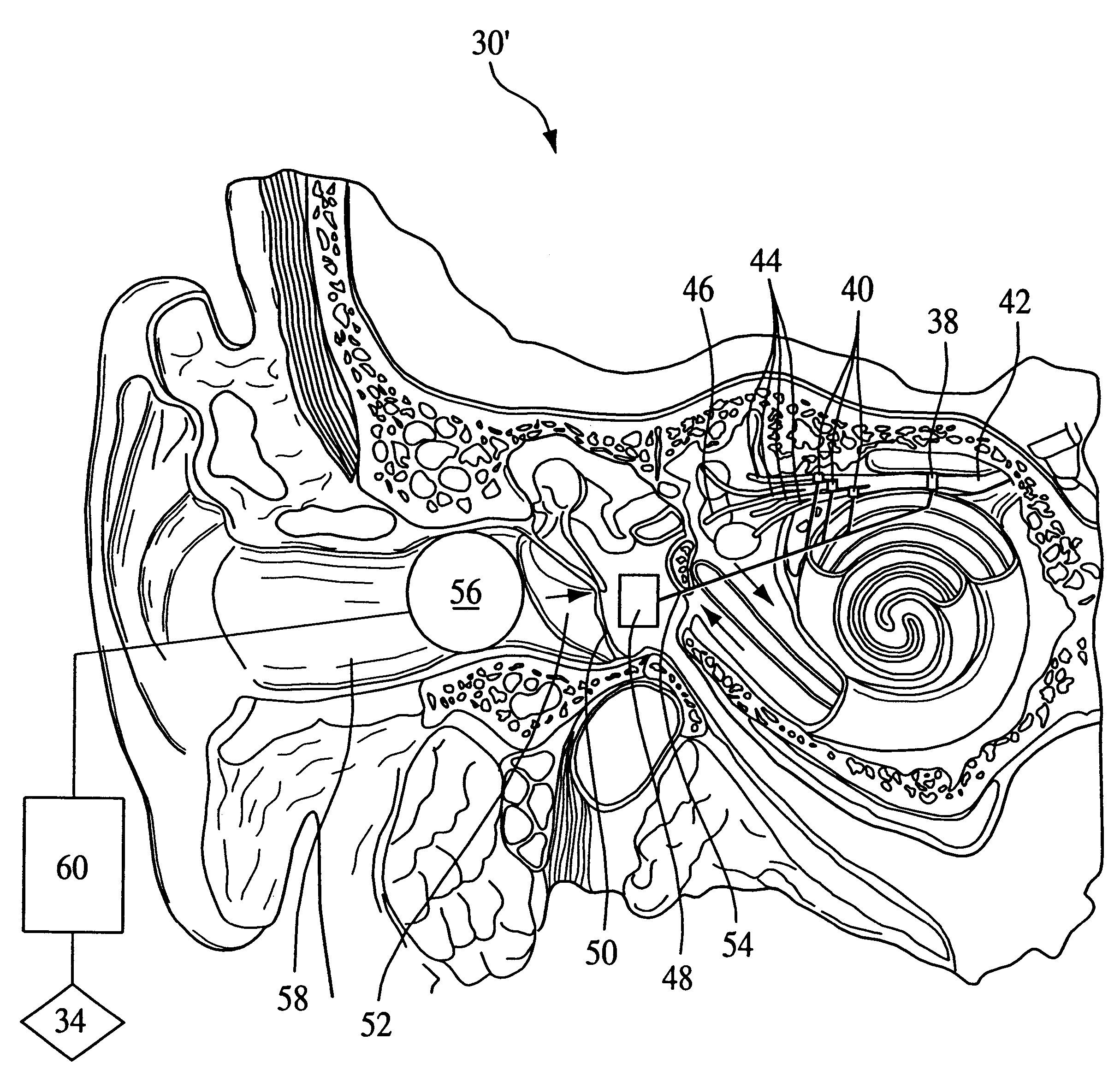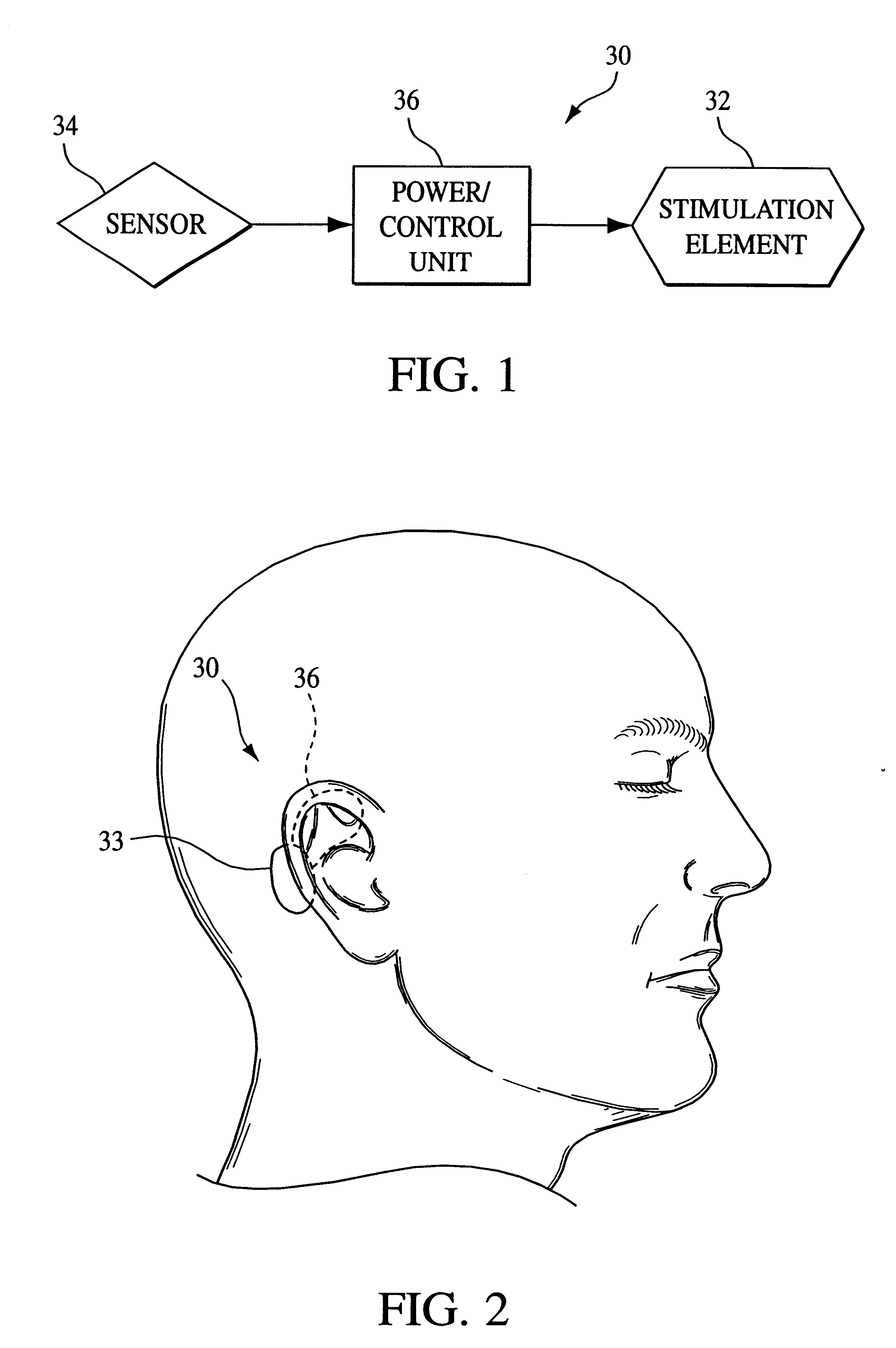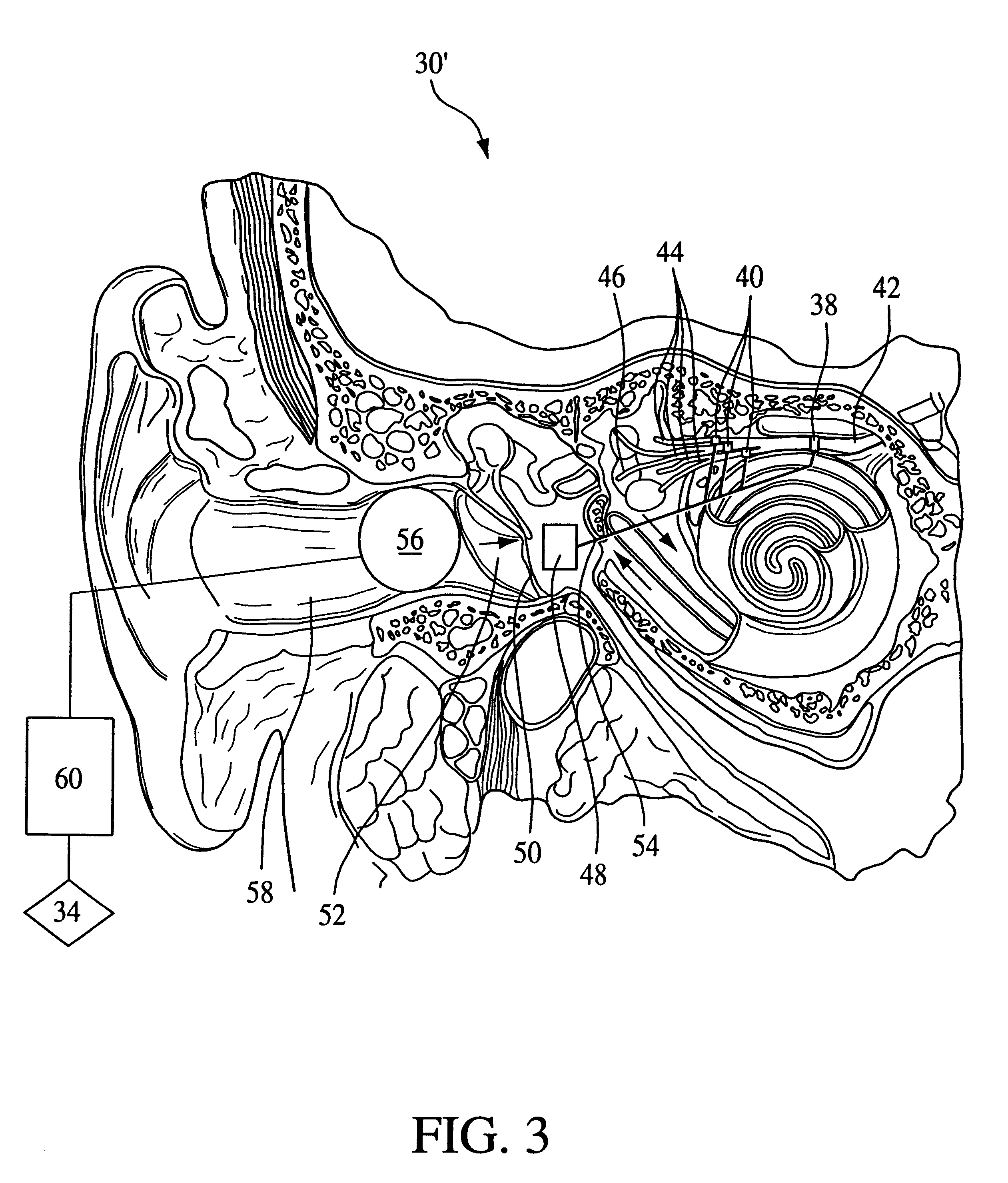Vestibular stimulation system and method
a technology of vestibular system and apparatus, which is applied in the field of apparatus and method of stimulating the vestibular system of a patient, can solve the problems of patient long-term problems, patient may not be tolerated by the patient, and patient may have difficulty in being weaned off the ventilator
- Summary
- Abstract
- Description
- Claims
- Application Information
AI Technical Summary
Benefits of technology
Problems solved by technology
Method used
Image
Examples
Embodiment Construction
FIG. 1 schematically illustrates an exemplary embodiment of a vestibular stimulating system 30 according to the principles of the present invention. Vestibular stimulating system 30 is a device that stimulates portions of the labyrinth associated with the labyrinthine sense and / or associated nerves to provide a therapeutic benefit to the patient. More specifically, the present invention contemplates stimulating, either invasively or non-invasively, the receptors of the labyrinth associated with the labyrinthine sense and / or the nerves or nerve branches associated with such receptors, including the vestibular nerve and its nerve branches. The present invention contemplates providing stimulation to at least one of these stimulation sites to perform one or more of the following functions: a) augment or assist a patient's natural respiratory function, b) open the patient's airway, c) induce or promote sleep, and d) counteract vertigo. The details of the particular sites of stimulation a...
PUM
 Login to View More
Login to View More Abstract
Description
Claims
Application Information
 Login to View More
Login to View More - R&D
- Intellectual Property
- Life Sciences
- Materials
- Tech Scout
- Unparalleled Data Quality
- Higher Quality Content
- 60% Fewer Hallucinations
Browse by: Latest US Patents, China's latest patents, Technical Efficacy Thesaurus, Application Domain, Technology Topic, Popular Technical Reports.
© 2025 PatSnap. All rights reserved.Legal|Privacy policy|Modern Slavery Act Transparency Statement|Sitemap|About US| Contact US: help@patsnap.com



